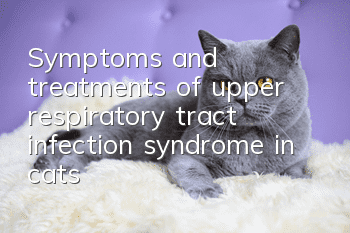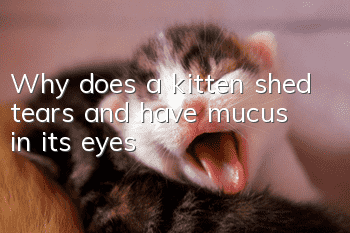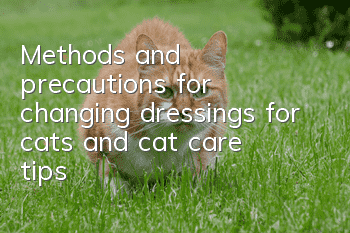Symptoms and treatments of upper respiratory tract infection syndrome in cats

Upper respiratory tract infection syndrome mostly occurs in cats that have not been vaccinated. The main clinical manifestations are secretions from the mouth and nose and sneezing. The symptoms are very similar to those of a cold. The following introduces the etiology, epidemiology and clinical symptoms of feline upper respiratory tract infection syndrome.
1. Pathogens and epidemiology
This disease is caused by a variety of pathogenic bacteria, mainly caused by feline herpes virus, feline calicivirus, Chlamydia psittaci, Bordetella bronchiseptica, chlamydia and reovirus. The disease is mainly infected through contact and droplet infection. Cats are infected through contact with sick cats and cats carrying the virus or through contact with contaminated environments, water basins, and cages. Cats can also be infected through contact with the hands of sick cats. Infect.
2. Clinical symptoms
In the early stage of the disease, the sick cat was depressed, had fever, and occasionally sneezed, shed tears and had a runny nose. The nasal discharge gradually changed from serous at the beginning of the disease to mucus and purulent secretions. The sick cats have loss of appetite and salivation. When checking the oral cavity, the oropharyngeal edema or ulcers are found. The sick cats lose weight and become emaciated. Unimmunized cats and kittens have severe symptoms of the upper respiratory tract when they are sick. Due to different pathogens of infection, the symptoms of sick cats are also different. The symptoms of cats infected by Bordetella bronchiseptica are mainly sneezing, fever, nasal discharge, palatal lymph node enlargement, and sometimes coughing. , the breath sounds increase during lung auscultation. Those infected with feline herpes virus, feline calicivirus, and Chlamydia psittaci may have no symptoms of respiratory infection and often have eye diseases.
3. Treatment
The treatment principle of this disease is to treat symptoms and prevent secondary infection.
1. The sick cat eats and drinks normally and can be treated and cared for at home. Use a clean towel to wipe the secretions from its eyes and nose. Pay attention to the temperature and ventilation of the nursing environment, avoid hot and cold periods, and ensure the nutritional supply of sick cats. Respiratory aerosol inhalation treatment can be used if conditions permit.
2. If the sick cat cannot eat due to oral inflammation, it must be hospitalized to supplement nutrition. Energy mixture can be injected intravenously, or liquid food can be injected through a gastric tube.
3. To prevent secondary infection, oral amoxicillin can be taken at 22 mg/kg of body weight, 3 times a day, or oxytetracycline can be taken orally at 2.5 mg/kg of body weight, 2 times a day.
4. Prevention
The main preventive measure for this disease is regular immunization. Strengthen the vaccination and management of cat farms to avoid contact with sick cats. The cat's breeding environment should be disinfected frequently. Breeders should change their clothes thoroughly and wash their hands when coming into contact with sick cats to avoid contact with infected healthy cats. Cat utensils and food bowls should be disinfected.
- How to train a cat not to disturb its owner at night?
- Under what circumstances do cats have a stress response?
- cat tail drooping and wagging
- What should you pay attention to when getting a second cat?
- What are the symptoms of a pet cat in heat?
- When does a cat need to be dewormed?
- Can colds from people be transmitted to pets? Everything you need to know when raising pets!
- What to do if a Persian cat suffers from heat stroke
- Why do cats love eating cat strips so much?
- What are the symptoms of feline plague?



